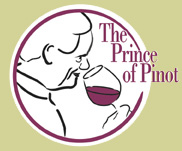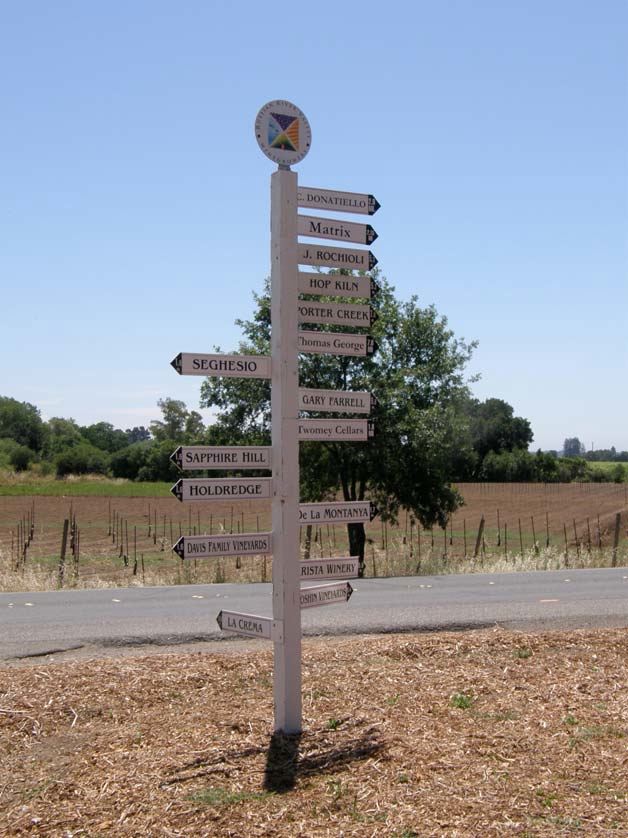50 Reasons Why Matt Kramer is Wrong
Matt Kramer is a highly quotable, well-respected wine writer best known for his monthly column in the Wine
Spectator and several reference books on wine (New California Wine, Making Sense of Burgundy, and Making
Sense of Wine). His quip, “Pinot is the voice of God,” will be forever enshrined in the pantheon of great wine
quotes. Kramer has been contributing regularly to Wine Spectator since 1985, using his one-page
commentary to “stir the pot” about subjects of interest to wine connoisseurs. His online “blog,” Drinking out
Loud, invites lively online discussions at www.winespectator.com/kramer, where everyone may read his
postings, but only paid members can respond with comments. His subjects are far-ranging, recently including
“Why Today’s Wine Lists Need Radical Change,” and “The Big Lie of Wine Democracy.”
I read Kramer’s acerbic observations online dated October 2, 2012, titled, “Dubious Wine Achievements of Our
Time: How Smart Wine People Became Boneheads.” One particular subject caught my eye, “The Banalization
of Russian River Valley Pinot Noir.” The word “banalization,” which Kramer created and may soon become part
of wine lexicon, is rather derogatory, since banal means humdrum, unoriginal, uninspired and bourgeois. He
said, “An awful lot of Russian River Valley Pinot Noir is repetitive; too many of the Pinots are, to this taster
anyway, oversimple and overripe....Today, when I pick up a Russian River Valley Pinot Noir I brace myself for
a deeply colored, lush, rather flat, simple wine with too much oak and too little of the layers and nuance that I,
anyway, think distinguishes fine Pinot Noir.” He goes on to put the blame on late picking and the overuse of
“flavor-potent” Dijon clones.
Not so fast Kramer, your proclamation is far too general to be true. I could not respond online since I am not a
dues-paying follower, so I am reacting through my personal newsletter with my corkscrew raised in defiance.
There are definitely some examples of the banal type of Russian River Valley Pinot Noir Kramer refers to.
Heck, I can give you examples from every major Pinot Noir producing wine region in California and Oregon.
Yes, there has been a trend over the recent two decades to pick late, over oak, and produce Pinot Noir
exclusively from Dijon clones, and this has been well-chronicled. It is also well known that at least some of this
trend has been driven by the preferences of some prominent wine writers and the American palate. It is also
true that the three Russian River Valley wineries Kramer admires, Dehlinger, Rochioli, and Williams Selyem,
are largely “Dijon-free,” but these producers, whose wines I also enjoy, might be slotted by some in the deeply
colored, lush camp (post-Burt Williams in the case of Williams Selyem). It’s what Russian River Valley terroir
can give you. Kramer admits in a more recent post, “Appellation matters....if a wine is presented to us as being
distinctive precisely because of place, then we would feel hoodwinked upon learning differently.”
Kramer you need to get out more and taste the variety of wines from the Russian River Valley. Here are 50
reasons why you are wrong. I have tasted multiple wines from several vintages for all the wineries listed. This
is not an all-inclusive list but includes wineries crafting Russian River Valley Pinot Noir that exemplify my point.
These producers offer wines that are anything but banal. Elegant in personality with tasteful use of oak,
displaying nuanced aromas and flavors at modest extraction levels, with good supportive acidity, and often
relatively low alcohol levels, these are wines to cherish. The noted winemaker of Alysian Pinot Noir from the
Russian River Valley, Gary Farrell, has eloquently expressed the goal of a predominant number of current
Russian River Valley vintners. “Many consumers and winemakers are beginning to favor a more elegant and
refined style of wine. It is not that we seek less flavor, texture or depth; it’s simply that we understand
abundance and generosity in wine is achievable without excessive extract and alcohol.”
It is important to emphasize that there are multiple terroirs in the vastness of the Russian River Valley that
encompasses 126,000 acres. Wines from these diverse areas exhibit significant differences. Wines of the
type Kramer refers to as banal, are more often from the warmer and less fog-influenced northerly regions of the
Russian River Valley and the area east of Highway 101. The wines from the very cool Green Valley
appellation, which is wholly contained within the Russian River Valley and is referred to as Green Valley of
Russian River Valley, for example, are completely different. They are usually labeled as from the Russian River
Valley. Green Valley Pinot Noirs typically have lively acidity that is termed “ice cherries.” The wines are closer
in type to the Sonoma Coast than the Russian River Valley with bright, crisp, and nuanced fruit flavors. No true
wine lover would call these authentic wines banal.
Kramer has offered a negative, far-reaching, and inaccurate generalization which to me serves little purpose,
demonizes Pinot Noir, and unfairly stereotypes a particular wine region. A preferable course would be to
embrace Pinot Noir in all its myriad styles. For me, I like to quote Mick Jagger: “It’s only Pinot Noir, but I like it!”
Alysian
Arista Winery
Athair
August West
Bailiwick
Benovia
Brogan Cellars
C. Donatiello
Castalia
Copain
Davis Family Vineyards
De La Montanya
Derbés Wines
DuMOL
Dutton-Goldfield
Eric Kent
Freeman
Gary Farrell
George Wine Co.
Gracciana
Hartford Family
Inman Family
J Vineyards & Winery
J. Rochioli
John Tyler
Joseph Swan Vineyards
Keefer Ranch
Littorai
Lynmar
Olson Ogden
Papapietro Perry
Paul Matthew
Porter Creek
Roadhouse
Saxon Brown
Scherrer
Siduri Wines
Skewis
Small Vines
St. Rose
Taft St.
Thomas George Estate
TR Elliott
Twomey
Vision Cellars
Walter Hansel
WesMar
Willowbrook
Woodenhead
Zepaltas



